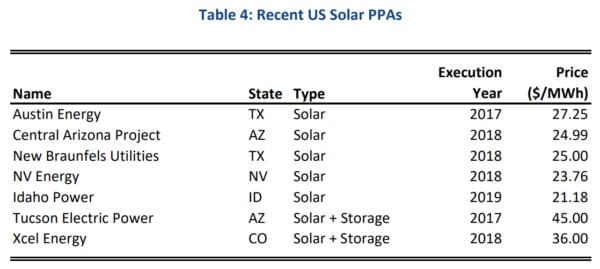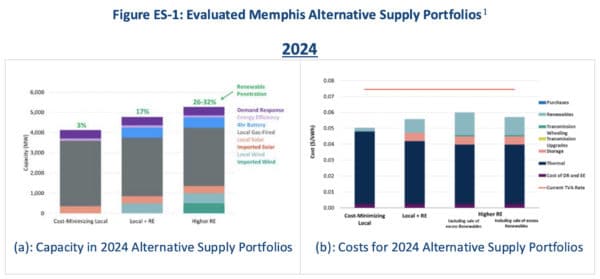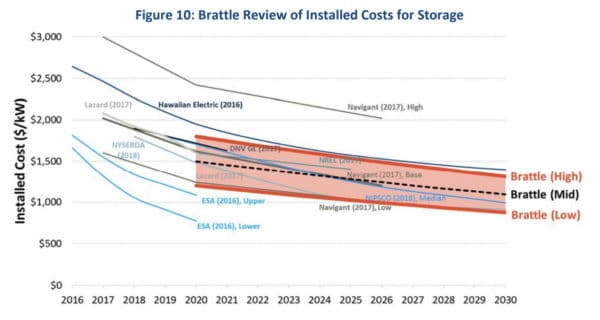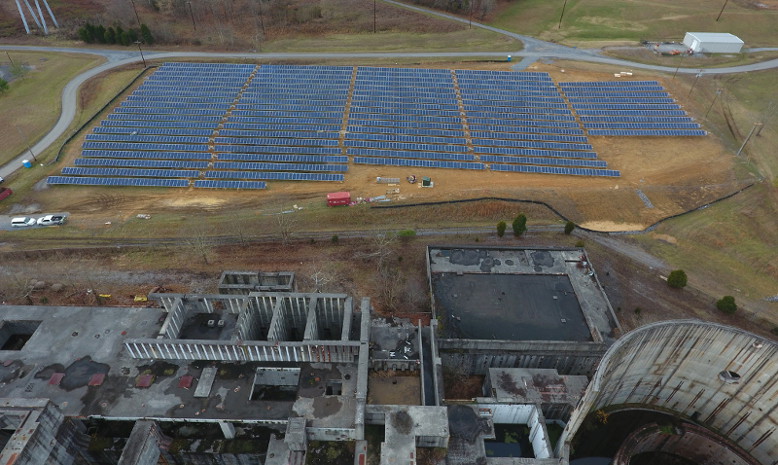Member-owned utilities in the western U.S. have begun exiting their longstanding contracts that commit them to buy power from electricity wholesalers, and now Memphis may join them.
As Memphis Light, Gas, and Water considers ending its contract with the Tennessee Valley Authority (TVA), one analysis shows the municipal utility could save $240-333 million per year by doing so.
Those projected savings were estimated in a Brattle Group analysis published early this year, funded by the environmental group Friends of the Earth, and have just been updated. While the Brattle study outlined three possible generating scenarios, with the higher-renewables scenario saving “only” $240 million per year, Brattle’s update suggests the higher-renewables option could save more money than originally projected.
That’s because, Brattle says, its earlier cost projections for renewables were potentially on the high side, given recent low prices for power purchase agreement (PPA) contracts for solar and solar plus storage:

Here are Brattle’s three scenarios:

Image: Brattle Group
In each scenario, Brattle’s modeling selected about 3 GW of new gas generation to meet the bulk of electricity demand, reflecting Brattle’s statement that transmission lines connecting Memphis to the Midcontinent Independent System Operator (MISO) were “assumed to be limited.”
Alternatively, Memphis could interconnect with the regional grid managed by MISO, for broader savings options, suggests an analysis by engineering firm GDS Associates. The firm observed that “The MISO market is well-supplied with generation and carries greater than 27% reserve margins (including non-firm load), allowing opportunities for interchange between control areas.”
A third study is now under way, as the Memphis utility contracted in July with Siemens to prepare an integrated resource plan, at a reported cost of $524,213. Earlier this year, regulators in Puerto Rico rejected the integrated resource plan that Siemens prepared for the island’s utility, as it was not in compliance with plan requirements, largely because the plan did not justify its selected resource mix that prioritized liquefied natural gas, a Siemens line of business. While Siemens also sells gas generating units and wind turbines, it does not sell solar equipment or develop solar installations.
Solar and storage shortchanged
The Brattle Group used the mid-case cost projections for solar from the National Renewable Energy Laboratory’s Annual Technology Baseline (2018). Those mid-case projections for solar costs “have historically underestimated real-world cost declines,” according to Energy and Environmental Economics (E3) Senior Partner Arne Olson.
Another challenge for solar in Memphis is that the Brattle Group analysis did not consider “full flexibility” operation of solar assets, which allows more solar on the grid, at greater cost savings—perhaps because Brattle’s analysis was well underway when the E3 went public with its findings on full flexibility operations.
And for storage, Brattle projected only a slow rate of capital cost reductions over time:

Brattle assumed that battery storage would have a useful life of 15 years, whereas a research team at Tesla now projects a useful life for new battery technology of more than 20 years.
Expert opinions
“Memphis can and should walk away from the TVA,” said Damon Moglen, senior strategic advisor at Friends of the Earth. He pointed to high TVA rates, which he attributed to “bad investments” in nuclear and coal, and said that half of Memphis households meet the definition of low-income, with one-quarter of those spending a quarter of their income on utility bills. He added that TVA does not support Memphis in promoting energy efficiency to drive down consumer bills.
One supporter of exiting TVA to provide “substantially less expensive” electricity with “significantly lower greenhouse gas emissions” is a former president of the Memphis utility, Herman Morris, who is also an advisor to Friends of the Earth.
TVA’s Manager of Public Relations Scott Gureck said “TVA’s 2019 Integrated Resource Plan also assumes a substantial increase in renewable resources for TVA, particularly solar.” TVA’s plan anticipates adding 1.5-8 GW of solar by 2028.
Looking ahead
Memphis is allowed to exit its contract with TVA contract after giving five years’ notice. Brattle’s analysts assumed that Memphis would at least know its generation options and their associated costs before deciding to give five years’ notice to exit its TVA contract. Yet Memphis need not make any decision immediately, and could continue exploring its options, rather than committing early on to a gas-heavy portfolio as modeled, for example, in each of the Brattle Group’s scenarios.
This content is protected by copyright and may not be reused. If you want to cooperate with us and would like to reuse some of our content, please contact: editors@pv-magazine.com.








BNEF now says that lithium-ion batteries cost $160 per kWh, so for a battery pack with four hours duration, that’s $640 for the batteries, plus the pack costs:
https://about.bnef.com/blog/making-sense-energy-transition-new-report-provides-framework-navigating-conflicting-narratives/
http://www3.weforum.org/docs/WEF_the_speed_of_the_energy_transition.pdf
“”Brattle’s statement that transmission lines connecting Memphis to the Midcontinent Independent System Operator (MISO) were “assumed to be limited.””
This one assumption of transmission lines to be “limited”, soils the study. As many high voltage transmission systems curtail demand after 10 to 12 PM every night, until the ratepayers wake up the next morning. Perfect time from 10 PM to 5 or 6 AM to charge regional energy storage systems along the grid for the next days energy requirements. MISO is having its, “If it ain’t broke, don’t fix it.”, fit.